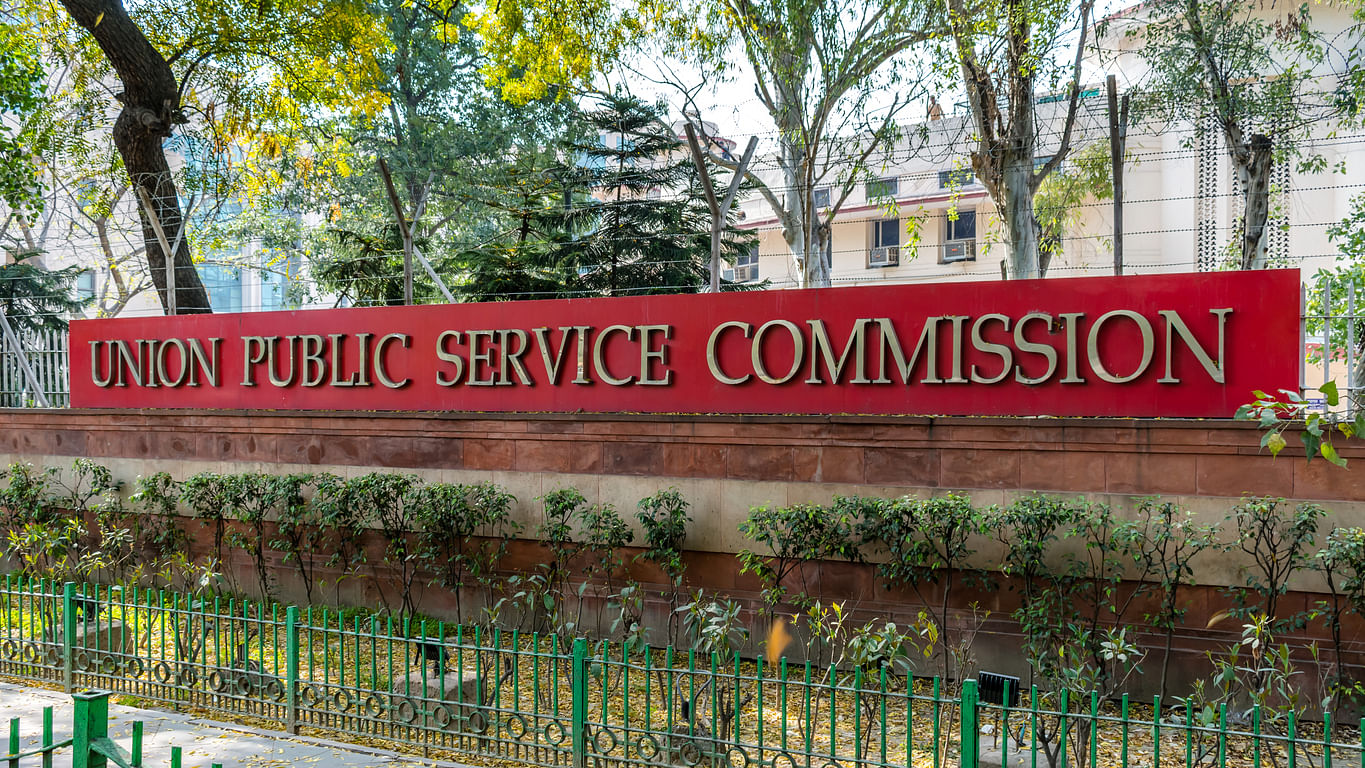
A Union Public Service Commission (UPSC) placard.
Credit: iStock Photo
On Tuesday, the Union government wrote to the Union Public Service Commission to withdraw its advertisement to recruit 45 senior and mid-career professionals in the Indian bureaucracy for the position of Joint Secretary, Director and Deputy Director in 24 ministries.
The government decision follows sharp criticisms from opposition parties and even some of the BJP allies who questioned the rationale behind the move. Sumit Pande explains the controversy over the lateral entry of specialists into India’s governing machinery.
How Indian bureaucrats are selected?
The bureaucrats are selected through different competitive examinations, the topmost of which is an all-India competitive examination (and subsequent interview) conducted by the UPSC to select the officers for two dozen services like the Indian Administrative Services, Indian Police Service, Indian Revenue Service, Indian Audit & Accounts Services, Indian Postal Service, and Indian Defence Accounts Services. The UPSC civil service examination tests the ‘generalised knowledge’ of candidates for selecting them as cogs in the Indian bureaucratic system. It is a colonial legacy and continuation of the Indian Civil Services system designed to administer the country in the pre-Independence ‘ruler-subject’ decision-making paradigm.
What is the genesis of the lateral entry debate?
The first Administrative Reforms Commission (ARC), chaired by former prime minister Morarji Desai, delved into the issue of lateral entry of subject-specific experts into the governance system while discussing ways to spruce up ‘machinery of GOI and its procedures of work’ and ‘personnel administration.’
The Constitution Review Commission set up by the Atal Bihari Vajpayee government in its 2002 report not only supported the idea of lateral entry but also suggested that the administrative structure specialist should not be required to play second fiddle to the generalist at the top.”
The second ARC, headed by Congress leader and former Karnataka chief minister M Veerappa Moily, was constituted during the UPA-I regime when Manmohan Singh was the prime minister. It recommended lateral entry for specialised jobs in government services.
Why are lateral entries favoured?
The recruit is tested on the ability to grasp the specifics of any department in a short period and to bring in a fresh and broad outlook to the task at hand.
Those supporting lateral entry posit that elected political executives or ministers are well aware of issues faced by the public. They need domain specialists and not 'generalized experts' for policymaking and implementation.
What did the Narendra Modi government say while dropping the plan?
While asking the UPSC to withdraw its advertisement seeking lateral entry into the bureaucracy, Union Minister Jitendra Singh noted that during the UPA rule, important positions like the head of the UIDAI, the nodal department managing AADHAR cards, were given to a lateral entrant – Nandan Nilekani of Infosys.
The opposition on the other hand, claimed that appointments made by previous governments were specific cases where individuals like economists like Manmohan Singh and former RBI governor Bimal Jalan were brought on board. Those were isolated cases for lateral entry of specialists with domain knowledge. But since 2018, the Modi government has formalised the system with the lateral entry of 63 candidates in the top and middle-level positions. The opposition has also accused the government of eschewing the reservations for SC, ST, and OBCs in the lateral entry appointments of the recent advertisement released by the UPSC.
Is it necessary to follow the reservation rules for lateral entry?
Reservation in public jobs and universities is implemented via a 13-point roster policy of the Department of Personnel and Training that states reservation does not apply to deputation/absorption, where the recruitment rules prescribe a percentage of posts to be filled by these methods, such posts shall be excluded for determining reservations.
What happens now?
The government has now written to the UPSC that since these posts were “treated as specialised and designated”, there was no provision for quotas. But underscoring the importance of “upholding the constitutional mandate towards social justice”, it urged the UPSC to withdraw the advertisement. Union Minister Jitendra Singh observed that such a "move should be aligned with social justice.”